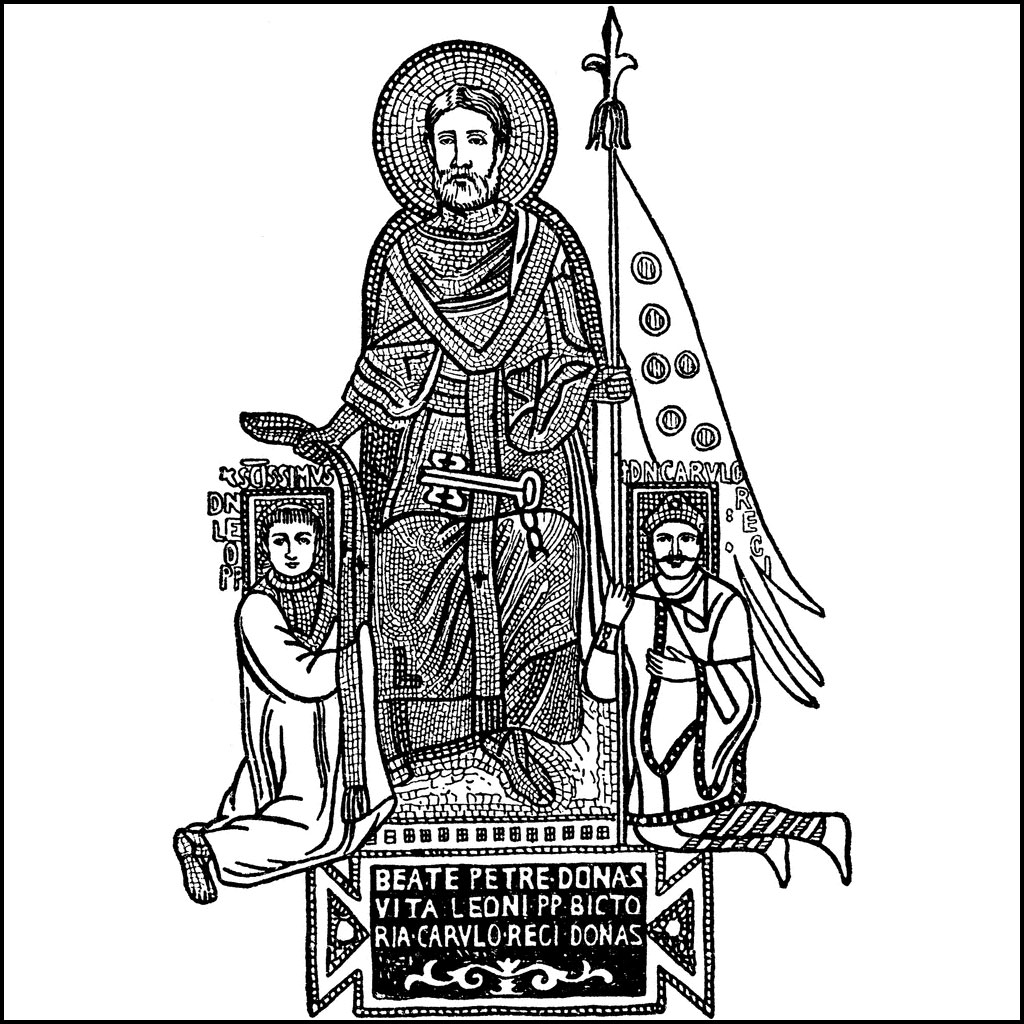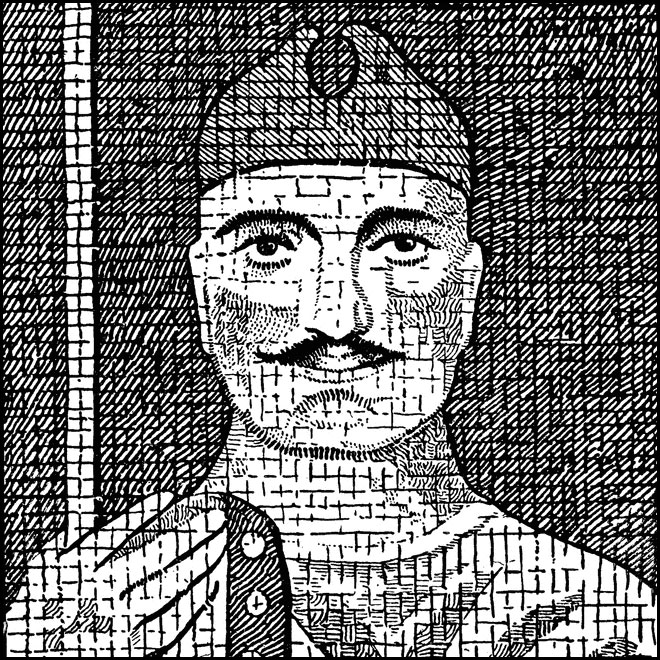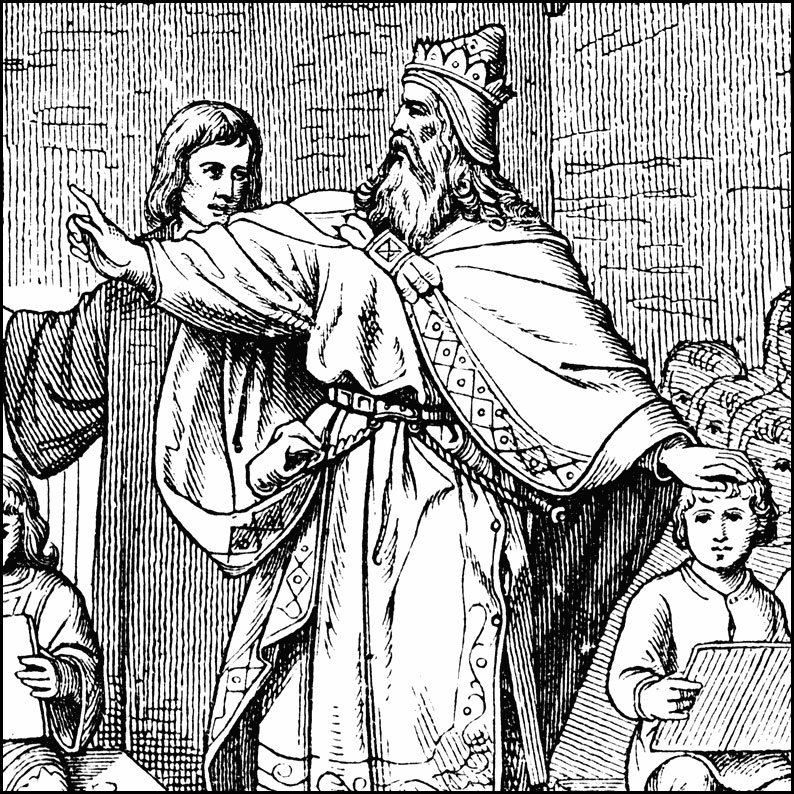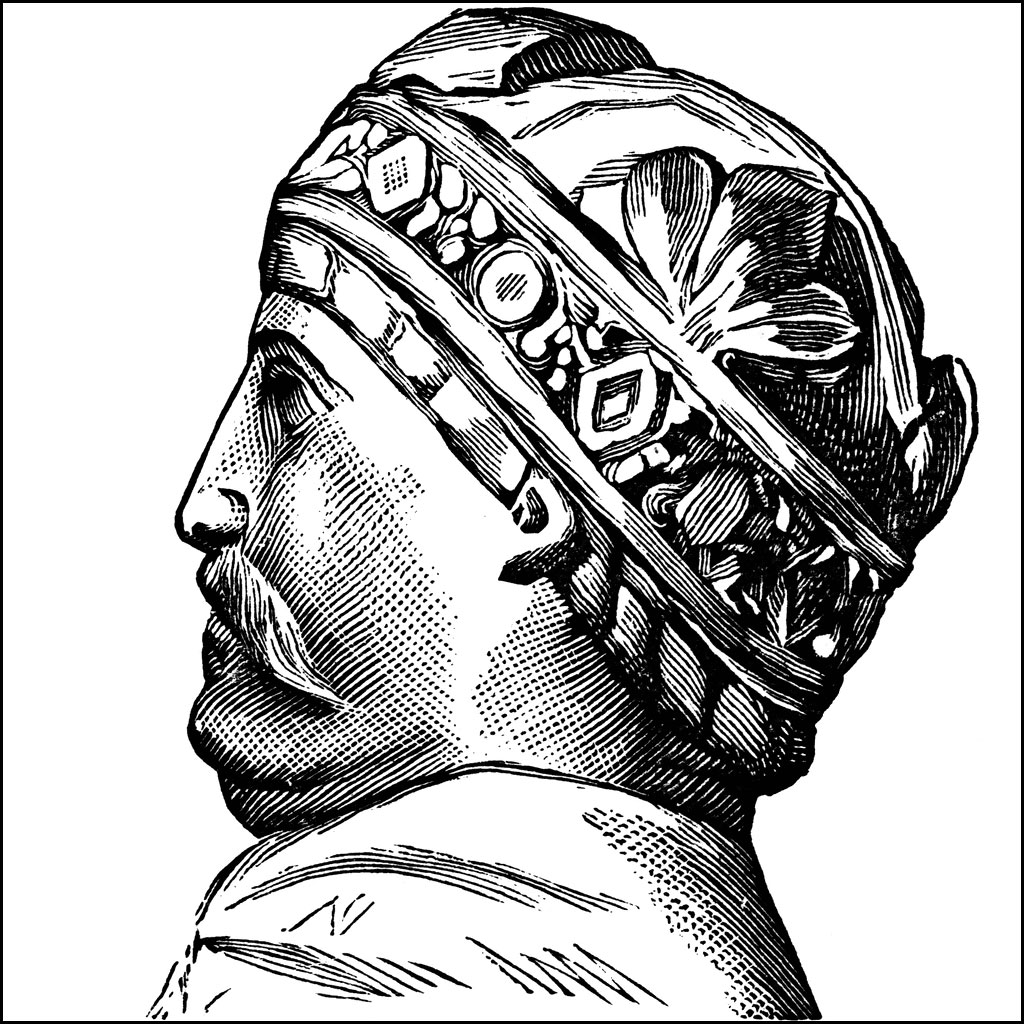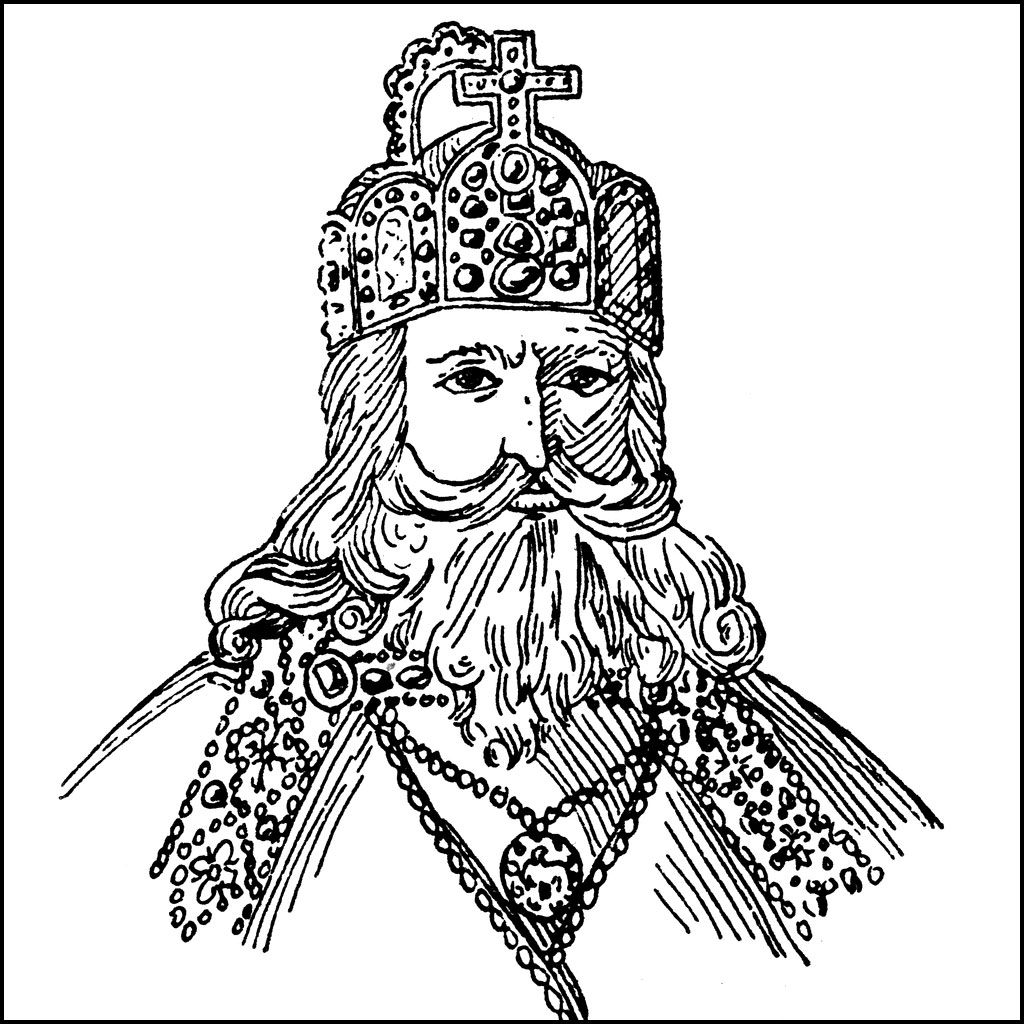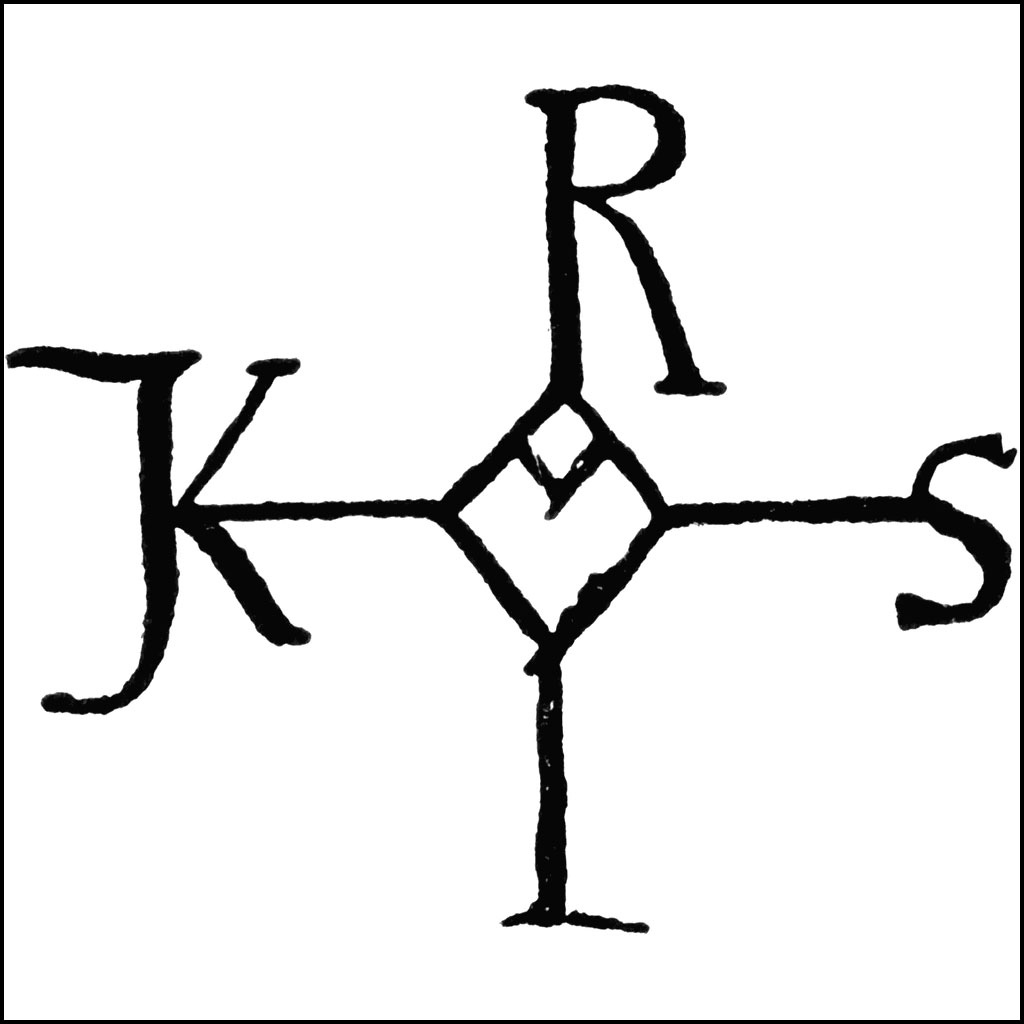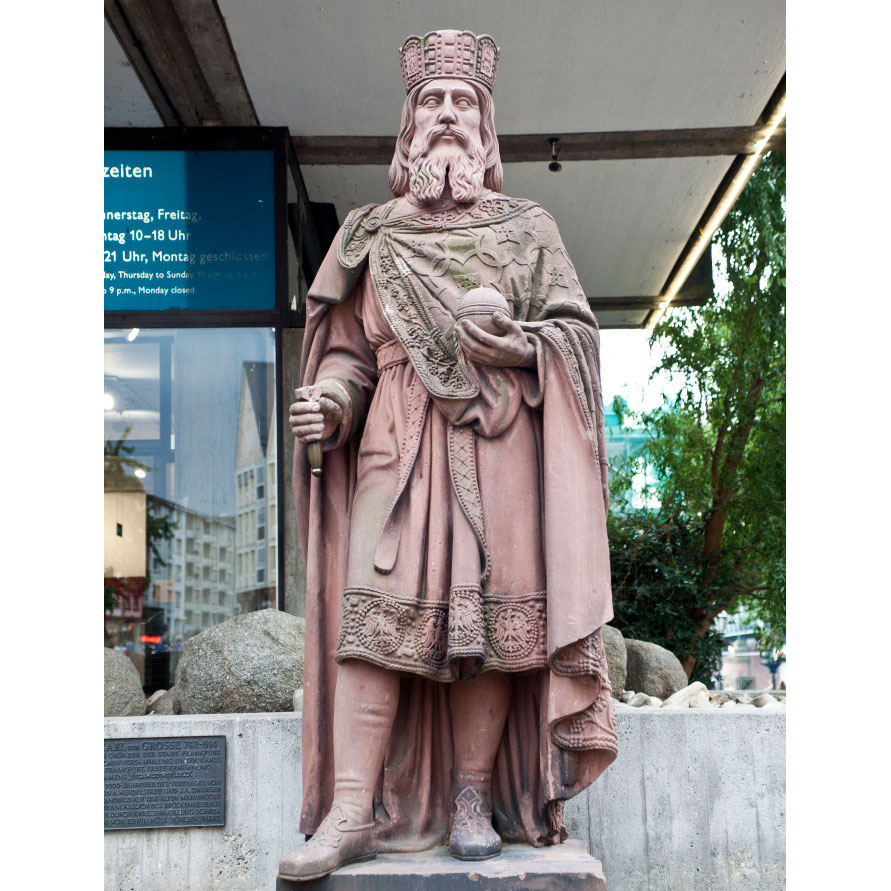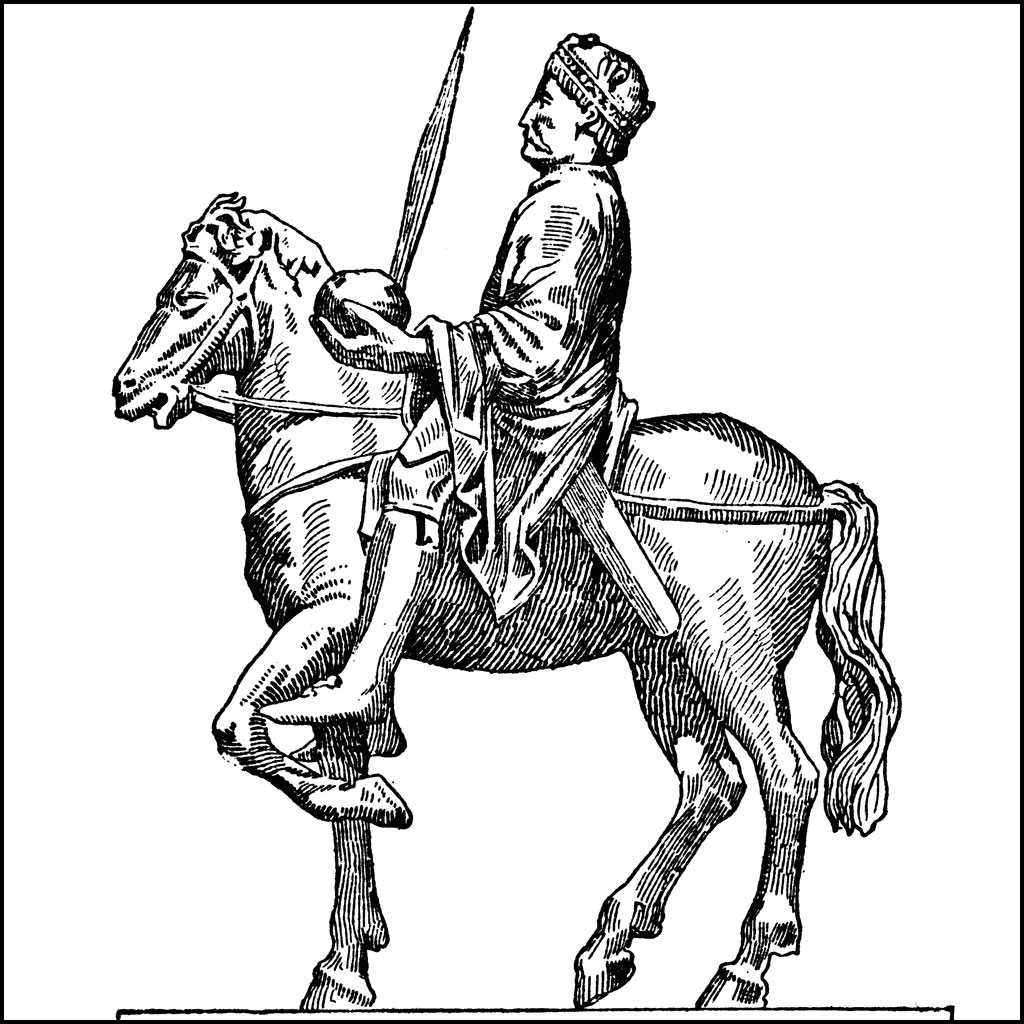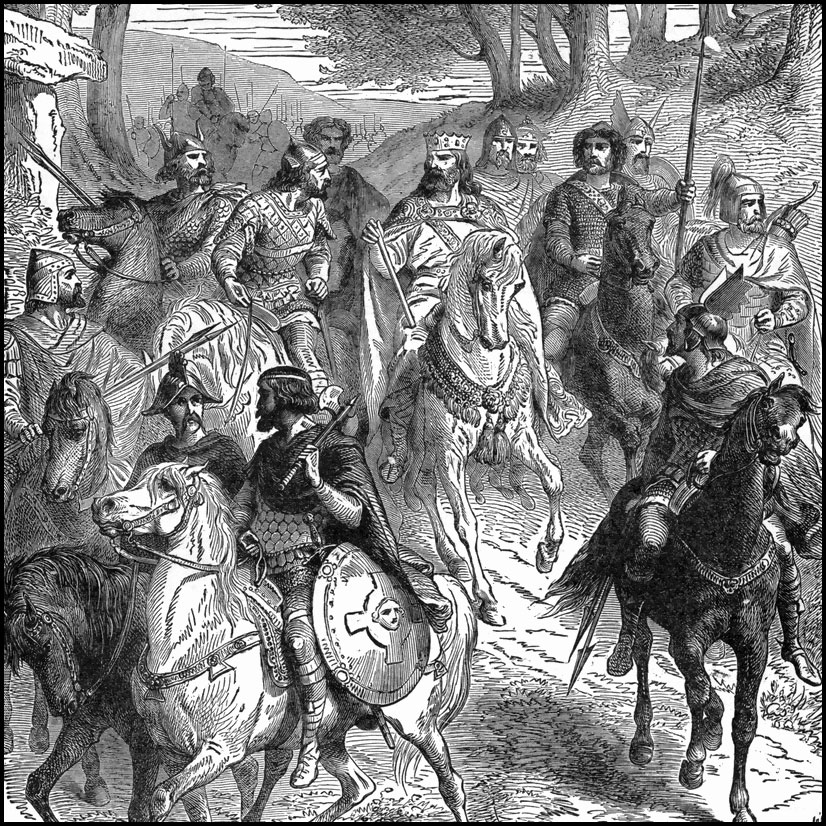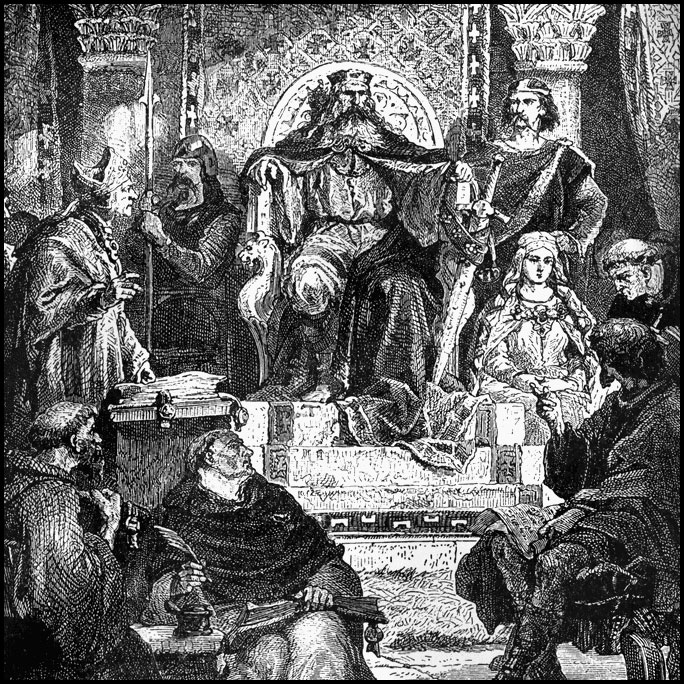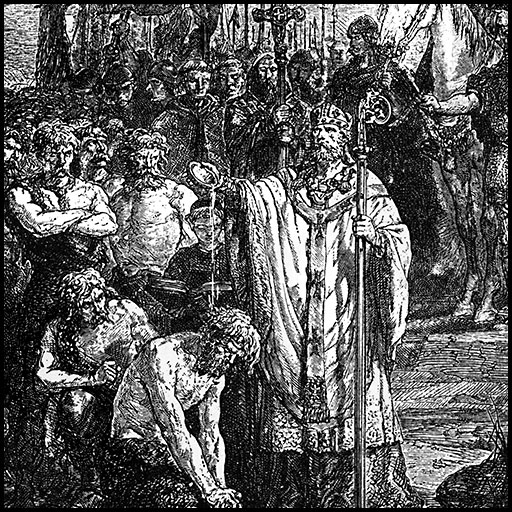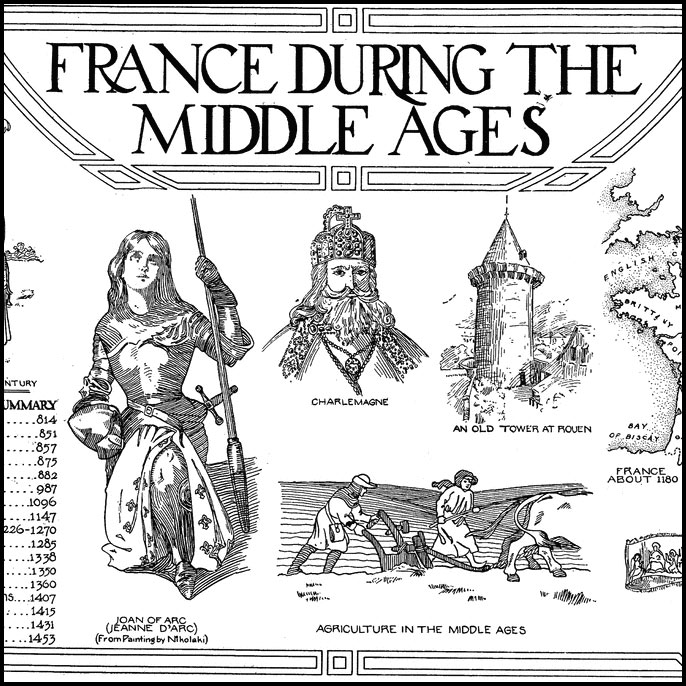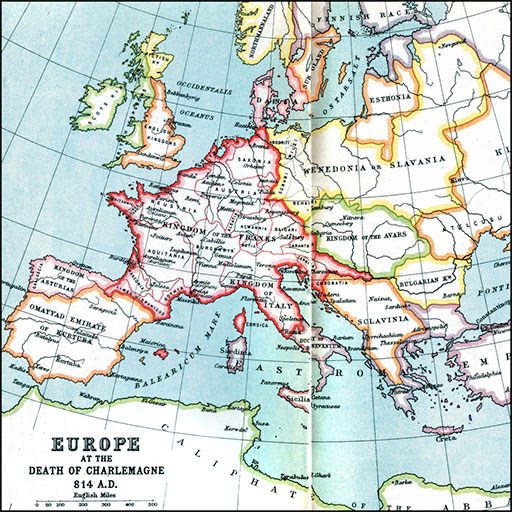December 25: Charlemagne
On this date in A.D. 800, Pope Leo III crowned Charlemagne as the “Emperor of the Romans” at the old Saint Peter’s Basilica in Rome. We’ve collected images and maps related to the life and times of Emperor Charlemagne.
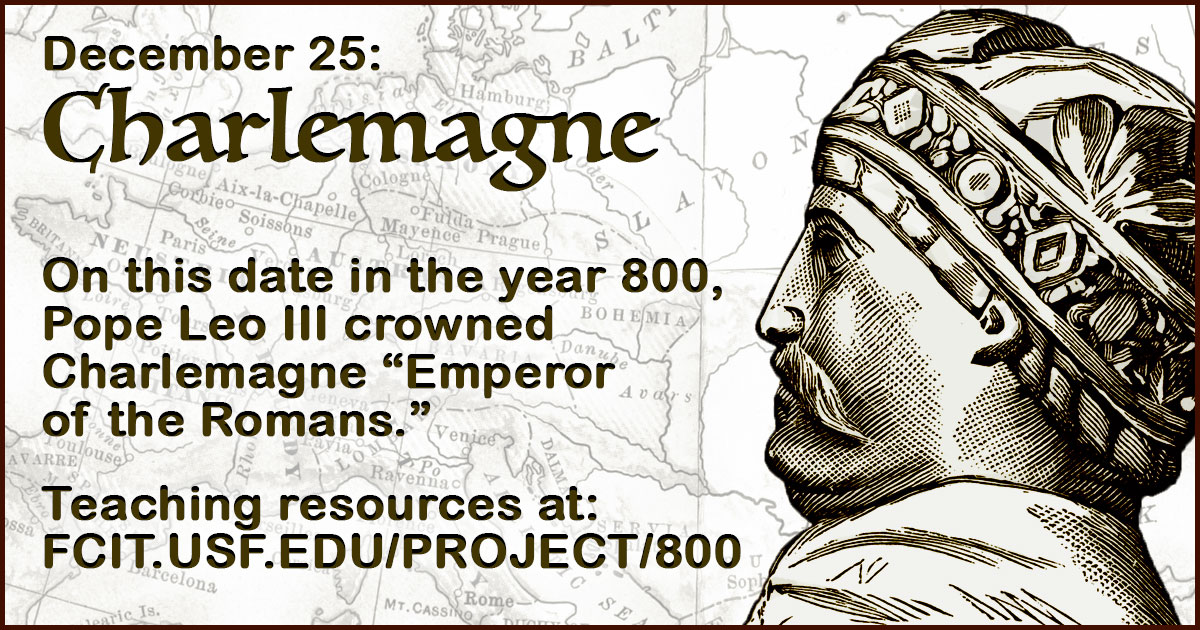
Charlemagne Banner
Use this banner on social media to share our Charlemagne teaching collection.
Mosaic of Leo III and Charlemagne
In this mosaic, St. Peter gives to Pope Leo III the stola and to Charlemagne the banner of Rome as symbols of the spiritual and temporal power. The square halos indicate that both Leo III and Charlemagne were alive at the time the mosaic was created. Illustration from the ClipArt ETC website.
Mosaic Portrait
Mosaic portrait of Charlemagne from the ClipArt ETC website. This is a detail of the previous illustration.
Charlemagne with School Children
Emperor Charlemagne in a classroom from the ClipArt ETC website. Charlemagne was a patron of learning.
Profile of Charlemagne
Profile portrait of Charlemagne from the ClipArt ETC website.
Portrait with Crown
Portrait of Charlemagne with crown from the ClipArt ETC website.
Charlemagne's Signature
Signature of Charlemagne from the ClipArt ETC website. Although Charlemagne encouraged education throughout his empire, he himself struggled with writing. He drew only the central portion of his signature. The outer letters were completed by his secretary.
Freestanding Statue of Charlemagne
Charlemagne statue in Frankfurt, Germany, from the ClipPix ETC website.
Equestrian Statue of Charlemagne
Statue of Charlemagne on horseback from the ClipArt ETC website.
Charlemagne and His Nobles
Charlemagne riding with his nobles from the ClipArt ETC website.
Charlemagne Seated
Charlemagne presides at the school of the palace, from the ClipArt ETC website.
Charlemagne Baptizing
Charlemagne baptizing the Saxons from the ClipArt ETC website.
Poster of France during the Middle Ages
This poster of France in the Middle Ages begins it chronology with Charlemagne. Illustration from the ClipArt ETC website.
Charlemagne's Empire A.D. 768-814
A map of Europe in the time of the Empire of Charlemagne. This map shows Charlemagne’s Empire and its political center in Aachen, the lands of the non–German peoples, the East Roman Empire with its capital in Constantinople, the Kingdom of Leon in northern Spain, and the Mohammedan Empire in Spain, northern Africa, and the Middle East. Map from the Maps ETC website.
Europe at the Death of Charlemagne
A map of Europe in AD 814, at the death of Charlemagne, showing the frontiers of Charlemagne’s Empire, which included Neustria, Saxony, Austrasia, Aquitaine, Spanish March (or Marca Hispanica, the buffer zone created by Charlemagne in AD 795 between the Frankish Empire and the Umayyad Moors of the Iberian Peninsula), Italy, the territories of the Burgundians and Alemanni, and portions of the Avars territory. This map shows the extent of the Eastern or Byzantine Empire, and the Moslem territories of the Caliphate of the Abbasids, and Emirate of Cordova. The map also shows the expansion routes of the Northmen (Norse) to Iceland and Greenland, the British Isles, and Slav territories, and shows the territories of the Asturians, Finnish tribes, Swedes and Goths, Slavs, Khazars, Pruzzi, Poles, Magyars, Bulgars, and Serbs. Map from the Maps ETC website.
Europe at the Death of Charlemagne
A map of Europe at the time of Charlemagne’s death in AD 814 showing the extent of the Kingdom of the Franks, which included the Kingdom of Italy, Frisia, Saxonia, Britannia, Limes Britannicus, Neustria, Thuringia, Aquitania, Wasconia, Limes Hispanicus, Gothia, Bergundia, Alsatia, Almannia, Baioari, Retia, Carantania, Carniola, Chrobatia, and Austria (also known at the time as Austrasia which was situated in portions of today’s northeastern France, western Germany, Belgium, Luxemburg, and the Netherlands). Important cities shown in the Kingdom of the Franks include Brema (Bremen), Colonia (Cologne), Fulda, Aachen, Reganesburg (Regansburg), Parisü (Paris), Aurelianum (Orleans), Tolosa (Toulouse), Avenio, (Avignon), Massilia (Marseille), Genua (Geneva in Switzerland and Genoa in Italy), Mediolanum (Milan), and Roma (Rome). Other territories in Europe shown on the map include the Scots, British, Pictish, and English kingdoms of the British Isles, Kingdom of the Asturias and Omayyad Emirate of Kurtuba on the Iberian Peninsula, portions of Northmannaland (Norway) and the territories of the Finnish Races, Sub Oland (Sweden), Dania, Esthonia, Kingdom of the Khazars, Wenedonia or Slavania, Kingdom of the Avars, Duchy of Beneventum, Sclavinia, Bulgarian Kingdom, the East Roman or Byzantine Empire, and the Caliphate of the Abbasids in North Africa and the Middle East. Map from the Maps ETC website.
The Empire of Charlemagne and its Division
A map of Europe showing the extent and division of the empire in AD 843, including Francia Occidentalis, Lorraine, and Francia Orientalis. The map is color coded to show the territories of Norway, Gauthiod (Sweden), Denmark, Welshland, the Scots, the Anglo Saxons under Egbert, the Slavonians, Kingdom of Leon, Bulgaria, Servia, Duchy of Beneventum, and the Byzantine Empire. This map also shows the territories of the Caliphate of Bagdad in North Africa and Asia Minor, and the Caliphate of Cordova on the Iberian Peninsula. Map from the Maps ETC website.

